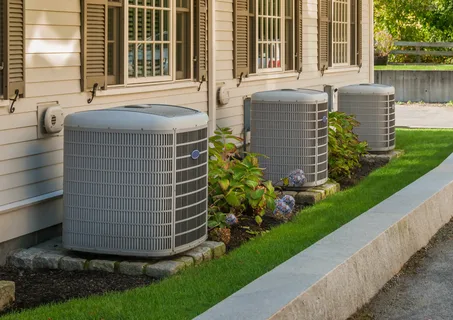For new homeowners, HVAC systems can feel overwhelming at first—but they’re easier to understand than they seem. In this HVAC 101 guide, we’ll break down the basics of heating, ventilation, and air conditioning (HVAC) so you can keep your home comfortable and efficient all year.
What Is an HVAC System?
HVAC is the system responsible for regulating your home’s temperature, humidity, and indoor air quality. It includes a combination of equipment that heats or cools your space, moves air around, and filters that air to keep it clean and safe to breathe. Most residential HVAC systems include:
- A furnace or heat pump for heating
- An air conditioner for cooling
- A thermostat for temperature control
- Ductwork to distribute air
- Air filters to trap dust, allergens, and debris
Heating: How It Works
Your HVAC system uses a furnace or a heat pump to keep your home warm during colder months. Here’s how they differ:
- Furnaces generate heat using natural gas, oil, or electricity. A blower fan then distributes the heat throughout your home via the ducts.
- Heat pumps, on the other hand, don’t create heat; they transfer it. They provide efficient heating by extracting warmth from the outside air and bringing it indoors. Many heat pumps also double as air conditioners, making them a versatile, energy-saving option year-round.
Cooling: Keeping Things Comfortable
Most homes rely on either a central air conditioning system or a heat pump set to cooling mode. These systems draw warm air from inside the house, cool it using refrigerant, and then send the cooled air back through the ducts to maintain a comfortable temperature.
A typical central air conditioning system includes an indoor evaporator coil, often located within the furnace, an outdoor condenser unit, and a blower fan that circulates the air throughout the home. Each part ensures consistent, efficient cooling during the warmer months.
The Role of Ventilation
For fresh, clean, and healthy indoor air, ventilation is essential. It removes stale air inside your home and replaces it with fresh outdoor air. Some homes rely on natural ventilation, like open windows, while others use mechanical systems, such as exhaust fans or air exchangers integrated into the HVAC system.
Good ventilation helps prevent mold growth, control indoor humidity, and remove allergens and airborne pollutants. Ensure your home has consistent airflow and proper ventilation to maintain a healthy and comfortable environment.
Understanding Your Thermostat
The thermostat is the main control center for your HVAC system. It measures your home’s current temperature and signals the system to turn on or off to maintain your preferred comfort level. There are several types of thermostats, each offering different features and levels of control. Here’s an overview of their differences:
- Manual thermostats provide basic temperature control. They are typically simple to operate but require physical changes throughout the day.
- Programmable thermostats offer more flexibility, allowing you to set different temperatures for various times of the day. This feature can help reduce energy use when you’re away or asleep.
- Smart thermostats go further by learning your schedule and preferences over time. You can also control the system using your preferred device. They can automatically adjust settings for maximum efficiency.
HVAC Maintenance Basics
One of the most essential parts of HVAC 101 is regular maintenance. Keeping up with routine inspections and simple upkeep helps your system run efficiently, reduces the risk of breakdowns, and extends its lifespan. Here are a few beginner-friendly tasks you can handle on your own:
- Change air filters every 1–3 months to maintain clean and healthy airflow and reduce strain on the system.
- Clean vents and registers regularly to ensure proper circulation throughout your home.
- Inspect for debris, leaves, or dirt in the outdoor unit that could be blocking airflow or damaging components.
- Schedule professional inspections at least once a year to catch any issues early and keep the system in top shape.
Keep Your Home Comfortable—Start with Smart HVAC Choices
As a new homeowner, understanding your HVAC system allows you to make informed choices that boost comfort, efficiency, and indoor air quality. From learning how your system works to handling simple maintenance tasks, HVAC 101 gives you the tools to protect your investment and avoid costly repairs.
Need help getting started or scheduling routine maintenance? Contact a trusted HVAC professional to assess your system, make recommendations, or set up a service plan. A little expert support can make a big difference in how your home feels all year.

